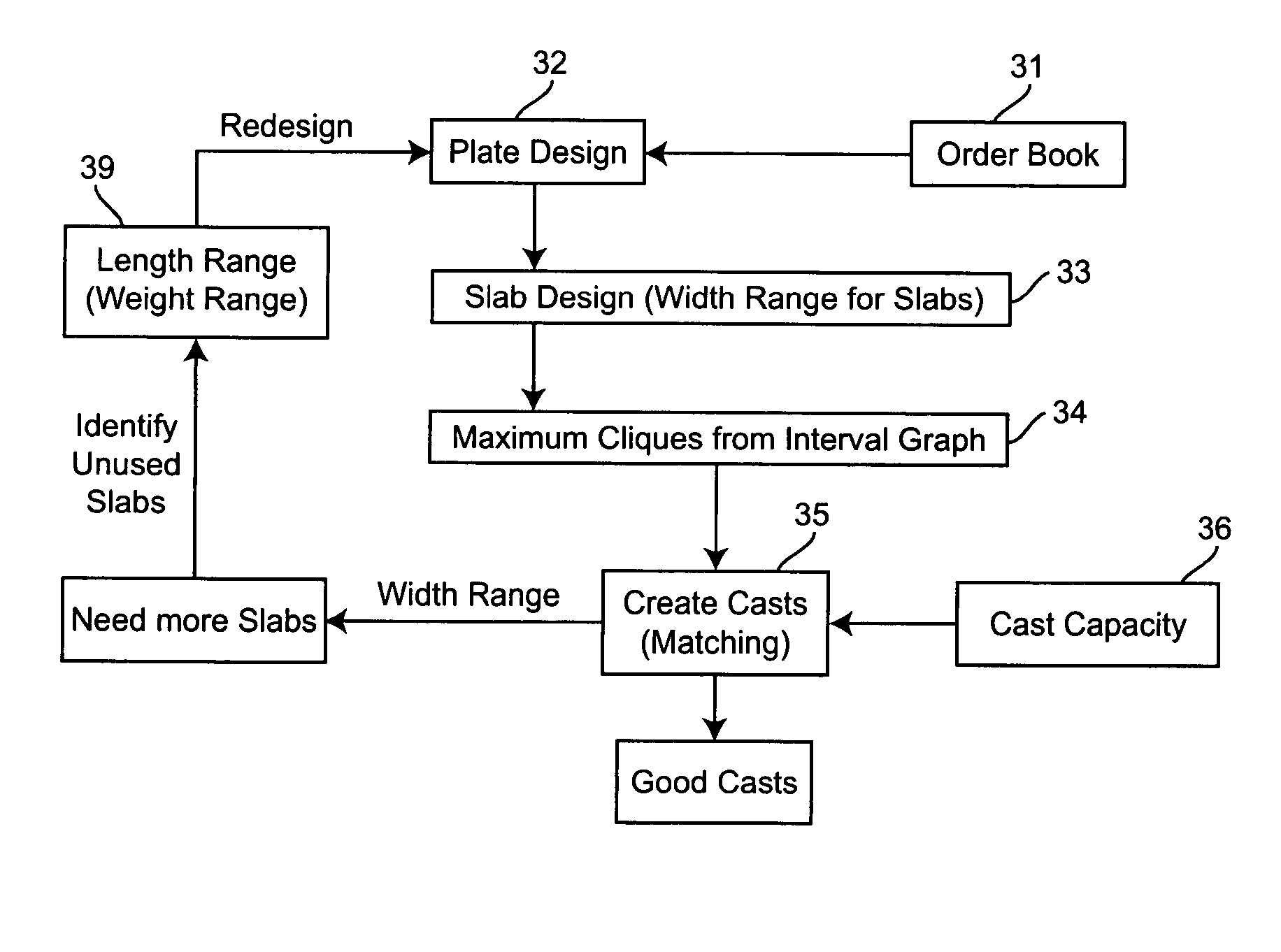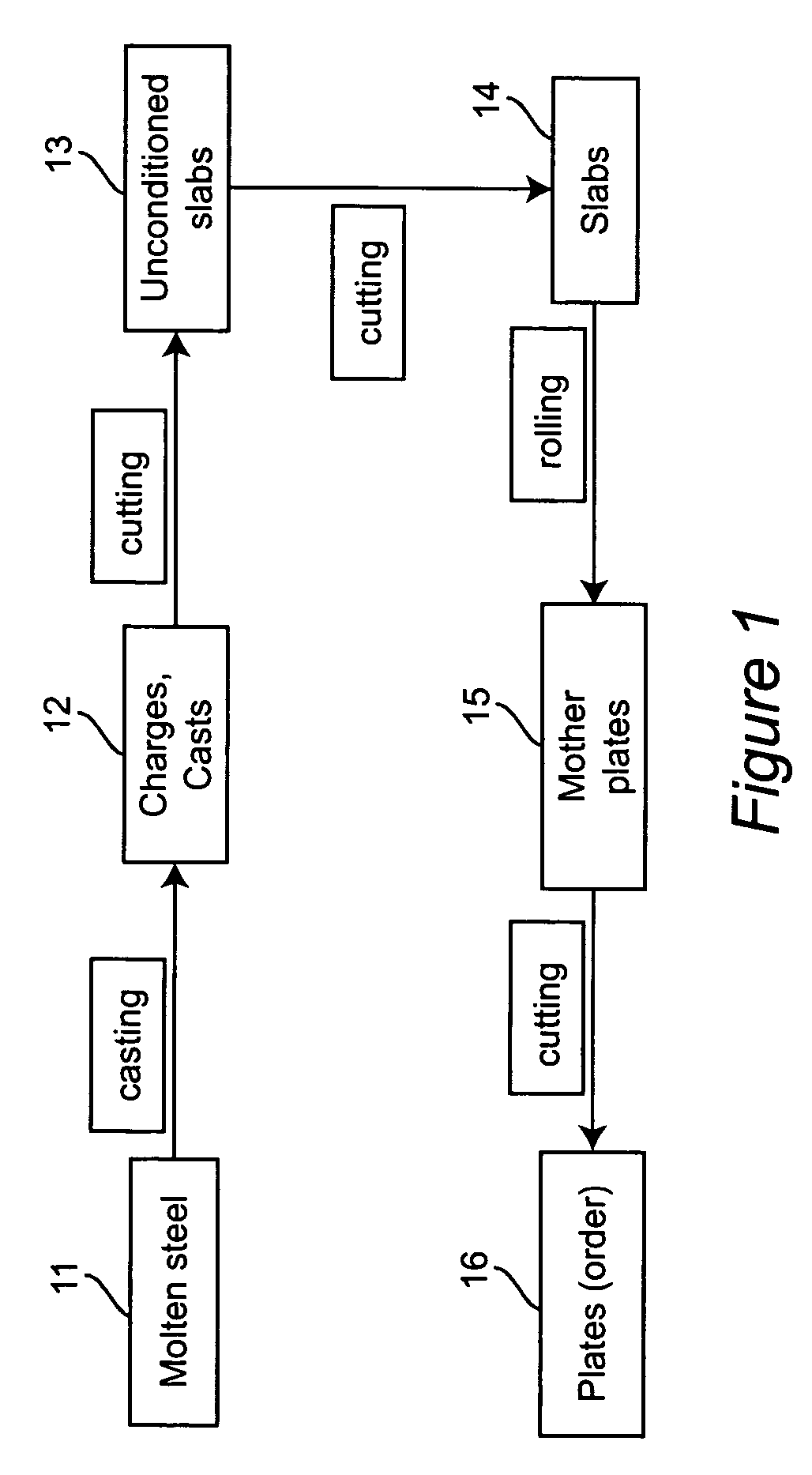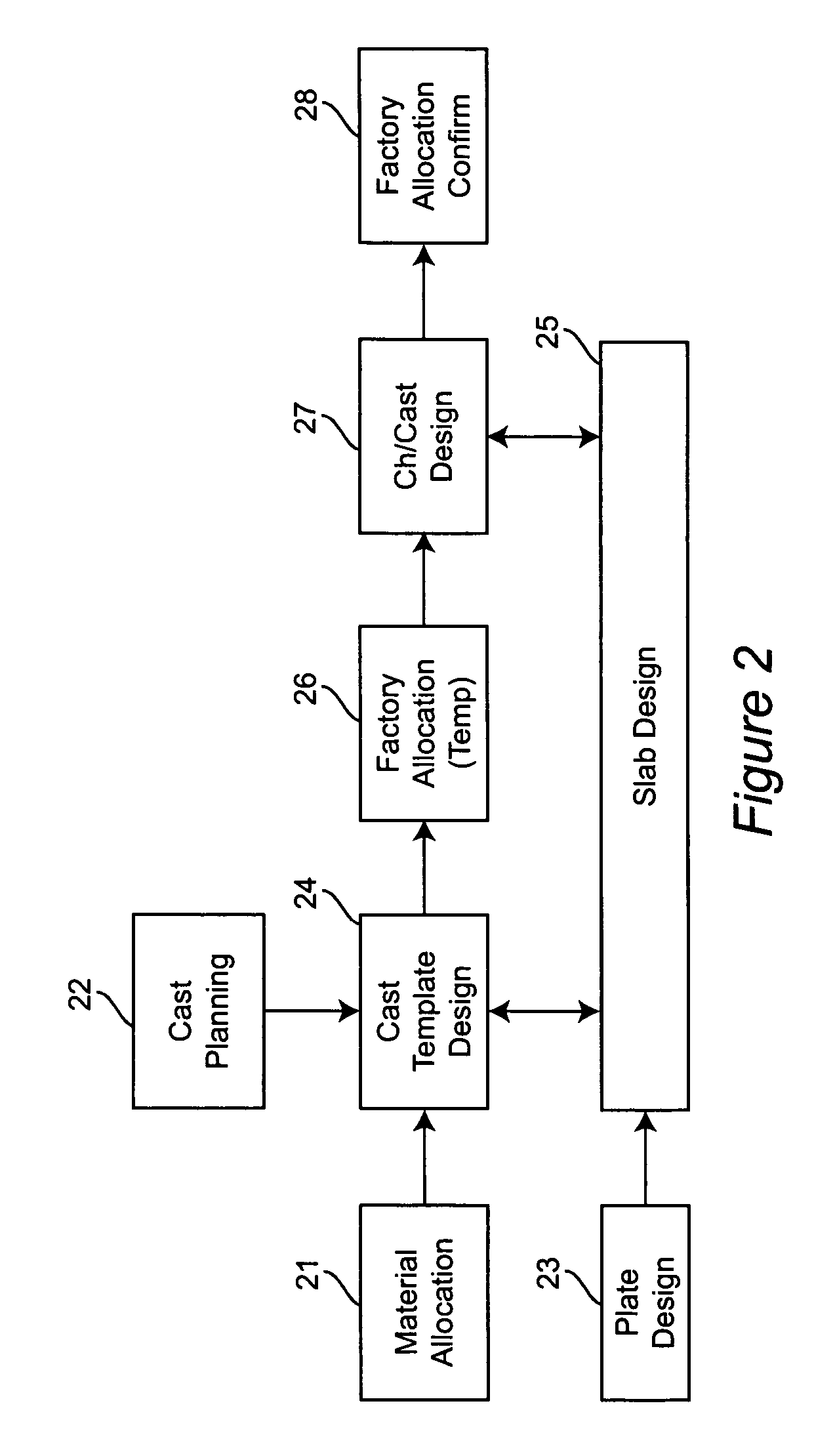Method for production design and operations scheduling for plate design in the steel industry
a technology of production design and operations scheduling, applied in the field of automatic optimization of manufacturing processes, can solve the problems of inability to solve the problem of large order books, inability to handle changes in manufacturing parameters in an optimal fashion, and existing computer methods which attempt to solve this problem do not produce optimal or near-optimal solutions, so as to reduce material waste and easily and quickly deal with changes.
- Summary
- Abstract
- Description
- Claims
- Application Information
AI Technical Summary
Benefits of technology
Problems solved by technology
Method used
Image
Examples
Embodiment Construction
[0030]Referring now to the drawings, FIG. 1 gives an overview of the problem. Molten steel 11 is poured into molds to produce charges and casts 12. The charges and casts 12 are cut to produce unconditioned slabs 13 which, in turn, are cut to produce slabs 14. The slabs 14 are rolled in plate factories to produce mother-plates 15. These mother-plates are cut to produce the plates 16 for customer orders. The goals of this process are to satisfy customer orders, minimize surplus and maximize yield. Yield is defined as that fraction of input material used to fill orders. There are constraints on the several processes, on the intermediate products, and the priority of individual orders which impact the goals.
[0031]In FIG. 2, there is shown a block diagram of the production design process of heavy plate. The process has as inputs material allocation 21, cast planning 22, and mother-plate design 23. Material allocation 21 and cast planning 22 are input to the cast template design process 2...
PUM
 Login to View More
Login to View More Abstract
Description
Claims
Application Information
 Login to View More
Login to View More - R&D
- Intellectual Property
- Life Sciences
- Materials
- Tech Scout
- Unparalleled Data Quality
- Higher Quality Content
- 60% Fewer Hallucinations
Browse by: Latest US Patents, China's latest patents, Technical Efficacy Thesaurus, Application Domain, Technology Topic, Popular Technical Reports.
© 2025 PatSnap. All rights reserved.Legal|Privacy policy|Modern Slavery Act Transparency Statement|Sitemap|About US| Contact US: help@patsnap.com



